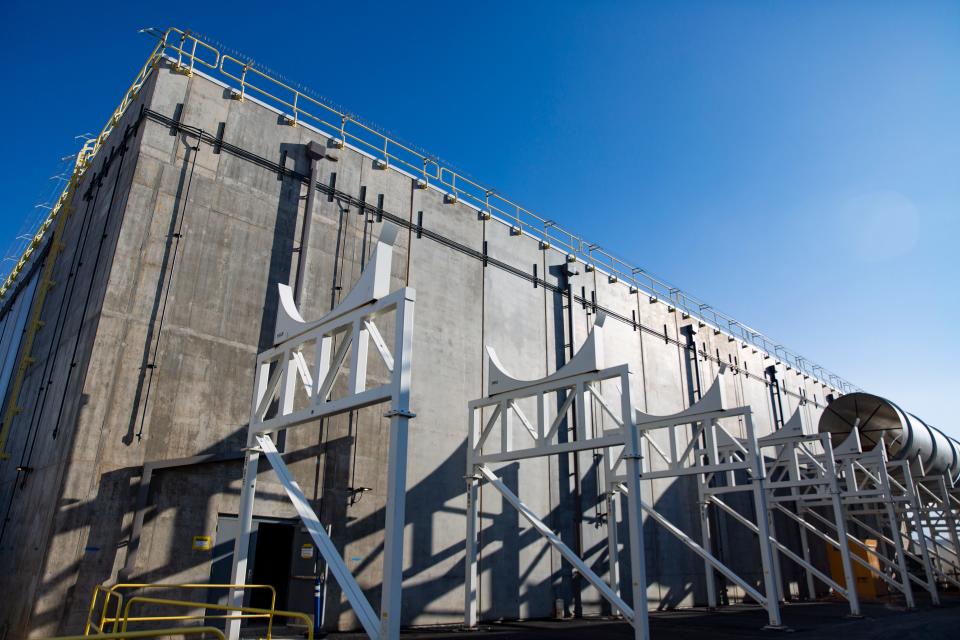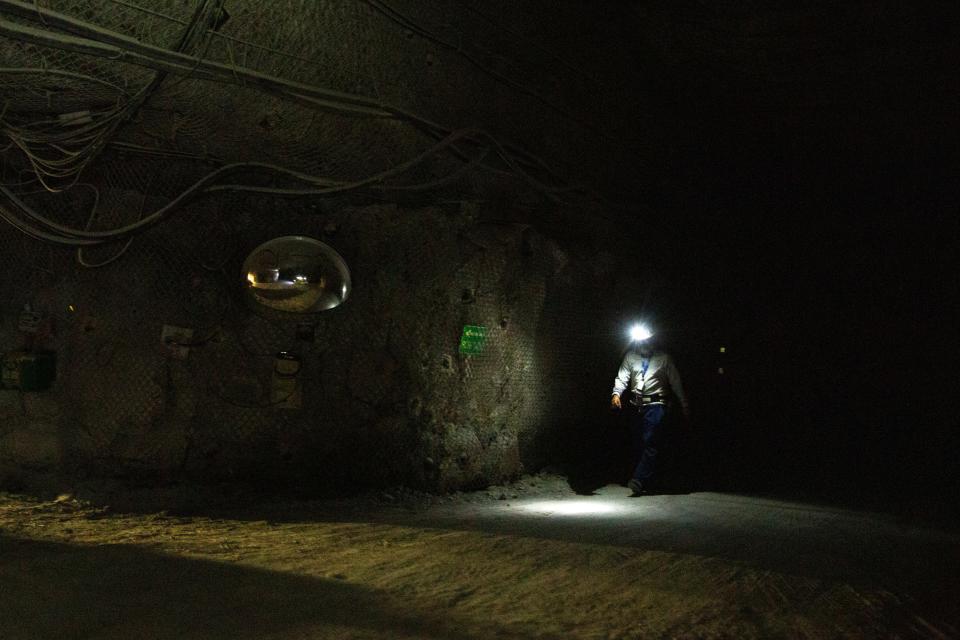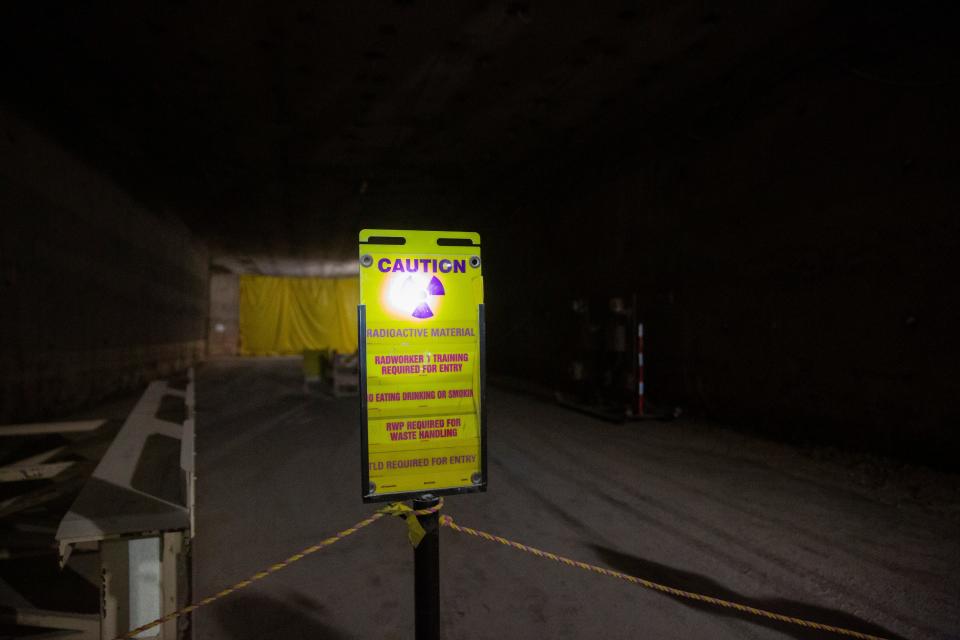Air shaft at nuke repository near Carlsbad hits final depth amid recent safety incidents
A $100 million air intake shaft at the Waste Isolation Pilot Plant reached its final depth of 2,275 feet. Nuclear waste managers said they needed the shaft to add air for underground workers to breathe.
The shaft, part of an almost-half-billion-dollar rebuild of the plant’s ventilation system, will also provide access to the west end of the mine where nuclear waste is disposed of via burial.
Two new panels are being built at the west end to hold nuclear waste, brought in to site near Carlsbad, while it is gradually buried by the collapsing salt. The added panels are needed to replace space lost after a 2014 incident contaminated parts of the underground.
More: Nuclear waste disposal permit issued for New Mexico site, WIPP to get bigger in November
Following the incident, WIPP’s airflow was restricted to about 170,000 cubic feet per minute (cfm). The shaft, along with a series of air filters known as the Safety Significant Confinement Ventilation System (SSCVS), will up available air to about 540,000 cfm.
The entire project was scheduled to be complete by 2026 as construction on the SSCVS continues along with work to mine access drifts that will connect the shaft with the rest of the underground.
More: New Mexico could try again to challenge nuclear waste storage project in court

The added air will allow plant workers to emplace waste, mine and perform maintenance on the facility at the same time, aiding in the U.S. Department of Energy’s plans to ramp up shipments of waste to the site to about 17 per week.
Shipments are sent from DOE facilities and nuclear laboratories around the country for disposal at WIPP. The work is supported by the new shaft, said Ken Harrawood, president of Salado Isolation Mining Contractors (SIMCO), the DOE-hired contractor that oversees WIPP’s daily operations.
“Completion to depth is a great achievement,” he said. “This milestone sets the stage for all of our future progress to the west including Panel 11.”
More: Here's how much of Idaho's nuclear waste was disposed of in southeast New Mexico
Drilling crews first brought the shaft to the depth of the waste disposal rooms in July, and the final depth provides space below the ground level for electrical infrastructure and other operations to support mining.
Project delayed by COVID-19 pandemic
The work was undertaken by SIMCO-hired subcontractors Harrison Western and Shaft Sinkers, which jointly won a $75 million contract for the work in 2019.
DOE Carlsbad Field Manager Mark Bollinger said crews worked on the shaft 24 hours a day to reach the final depth.
More: New Mexico's nuclear waste operations called into question during public forum in Carlsbad
The shaft did face multiple delays since the contract was awarded in 2019, largely driven by the COVID-19 pandemic, pushing the project beyond its initial 2022 completion date.

Rising infections at the WIPP facility led the New Mexico Environment Department to deny renewal of a temporary authorization to allow construction of the shaft before a modification of WIPP’s state permit would allow its use.
Work resumed in November 2021, about a year after it was halted by the state.
More: New nuclear waste rules stricter for Carlsbad area facility. Will New Mexico enforce?
“Reaching this milestone is a real tribute to the crews who worked safely and compliantly around the clock,” Bollinger said. “Congratulations to the workforce on this big step toward the creation of more airflow in the WIPP underground, an important part of the new WIPP infrastructure.”
Punctured drum, air monitor alarms reported at WIPP
Two incidents in the WIPP underground were cited in the latest monthly report from federal watchdog agency Defense Nuclear Facilities Safety Board: a punctured waste drum and air monitors alerting in the underground.
Reported on Aug. 30, a forklift driver collided with a drum containing nuclear waste, puncturing the container, according to the report. This led to a cease of waste handling operations while the area was tested for contamination.
More: Trinity Site downwinders call on US House to pass nuclear reparations for New Mexico
The incident happened when the drive hit an area of “soft ground,” altering his approach of the drum. The driver tested positive for a controlled substance, according to the report. The board was continuing to monitor SIMCO’s corrective actions.

Testing of the area and personnel showed no contamination was leaked and an inner plastic lining of the drum was undamaged in the incident.
More: Feds ramp up project sending nuke weapons waste from South Carolina to site near Carlsbad
The floor was being remediated to correct the “soft ground” conditions.
On Sept. 29, continuous air monitors (CAMS) in the underground began alerting, which indicated possible airborne contamination. All underground activities were suspended, and all workers on the surface were told to stay inside while the underground was evacuated.
Testing of the underground did not show contamination, and SIMCO reported the alerts were caused by electrical issues, according to the report.
Adrian Hedden can be reached at 575-628-5516, achedden@currentargus.com or @AdrianHedden on X, formerly known as Twitter.
This article originally appeared on Carlsbad Current-Argus: Air shaft at nuclear repository near Carlsbad hits final depth

